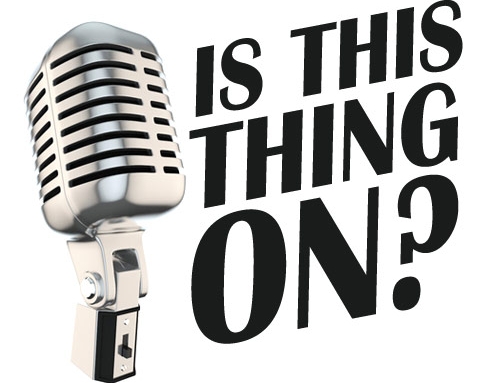 Advertising your business online is easy. Getting results, however, is an entirely different challenge. Before you spend money advertising online you should spend time learning and thinking about the mindset of your prospective customers. The biggest mistake I see when businesses start to do their own online advertising is forgetting about the mood and attitudes that are active in each different online marketing channel. Understand a customers mindset and you’ll waste a lot less money with your online marketing.
Advertising your business online is easy. Getting results, however, is an entirely different challenge. Before you spend money advertising online you should spend time learning and thinking about the mindset of your prospective customers. The biggest mistake I see when businesses start to do their own online advertising is forgetting about the mood and attitudes that are active in each different online marketing channel. Understand a customers mindset and you’ll waste a lot less money with your online marketing.
Sometimes prospective customers are actively looking to buy. Sometimes they’re randomly clicking through social media posts, and sometimes they’re watching videos of kittens stuck in trees. Each of those activities puts them in a different mindset, which is a major factor in their propensity to click on an ad and buy something. In the same way grocery stores put specific types of products at point-of-purchase displays in check-out lines, you need to match which products you display and how you display them based on the anticipated mindset of the customer based on where they are, and what they’re doing online.
How to advertise online: understand customer mindset for each online marketing channel
Generally speaking, when a person wakes up with a nasty hangover, that’s not a good time to sell them a bottle of merlot, whereas it is a good time to sell them some aspirin. The point is that there are appropriate (and inappropriate) products to pitch based on the current mindset of the customer. One of the biggest mistakes people make advertising online is running the wrong kind of ad or pitching the wrong kind of product in relation to the customers’ current state. This is particularly true when advertising on social media. Social media is a party, and most people at the a party aren’t looking to buy something… they’re looking for an open bar. They’re looking for free and fun.
 Just because you target people with the right kind of personal interests doesn’t necessarily mean they’re in the mindset to buy your product while they’re looking at photos of their friend’s new baby on facebook. A person with a bad hangover after a wedding reception probably does like a good bottle of wine, but they’ll curse at the ad and feel sick to their stomach if the timing of the sales pitch is wrong. To not waste money advertising online on social media, you must target interests AND customer mindset, otherwise you’re wasting money on what amounts to little more than a mediocre branding campaign.
Just because you target people with the right kind of personal interests doesn’t necessarily mean they’re in the mindset to buy your product while they’re looking at photos of their friend’s new baby on facebook. A person with a bad hangover after a wedding reception probably does like a good bottle of wine, but they’ll curse at the ad and feel sick to their stomach if the timing of the sales pitch is wrong. To not waste money advertising online on social media, you must target interests AND customer mindset, otherwise you’re wasting money on what amounts to little more than a mediocre branding campaign.
Example of a advertising and customer mindset mismatch: a diamond ring ad on Twitter. It’s a mismatch of prospective customer activity, product, and price point. An example of a better ad to place on Twitter: a 3-month free subscription to a magazine or streaming service. It’s low commitment offer: a chance to try something out and maybe find something new.
Social media is a low commitment, low price marketing channel. Anywhere someone is passively surfing is generally not a place that gets conversions for high-priced products. Social media is quite literally the online equivalent of “we’re just browsing”. That’s the mindset the potential customer is already in before they even see one of your ads. At best you’re only going to make them aware of your product or service, which means your ads need to cater to branding identity, PR, and free offers, rather than ads that are designed to lead to a direct sale.
The people and businesses that a person is following on social media helps you target potential customers (interest targeting), but that leaves out customer mindset at the time your ad is delivered. You may very well get clicks on your online ad, but mentally, those people aren’t in a place where they’re ready to spend significant money. They’re perusing, surfing, and cruising. They don’t have credit card in hand. If you are spending money on social media, then you must keep that in mind so that your ads and offers cater to that low-commitment mindset.
A general rule of thumb is based on your price point: people don’t buy high-priced items based on ads on social media. Why? Because people research for high-price purchases, which means search engines, not social media. Grocery stores don’t put expensive items at the check-out line displays; they put low-priced, low-commitment products. Unless you’re running a strict brand identity campaign, it’s the same with social media: low prices and low commitment convert much more often.
How to advertise online for high-priced products and services
There is a reason that a click on a facebook ad is very low and a click on a Google ad can be very high: because people are searching for the exact product on Bing or Google. If a person searches for “plumbers in Richmond” on Google, then we know that’s exactly what they need, and are highly likely to arrange service that day. They are a high quality lead with high potential of conversion. High quality leads cost more money, which is why search engine marketing always requires a larger chunk of your marketing budget.
Advertising on search engines has gotten much easier to do on your own, but there are still a lot of aspects of your SEM campaigns that require ongoing attention and optimization. Due to the higher cost per click of ads on search engine results pages, you want to make sure to be A/B testing different titles and offers, as well as the landing pages for each campaign and ad group. If you are using conversion tracking and analytics, then you’ll be able to know which ads and pages convert better, and therefore tweak and optimize your online advertising so that they get the best results.
 After your SEM campaigns are running for awhile, you will start to get suggestions for new keyword and sometimes text ads. Never activate those without really examining the suggestions. Well over half of the time they will not be a good fit for your product or service, which means you might get more clicks, but they won’t necessarily convert to sales. You know your customers better than Google’s computers do, so don’t always accept those suggestions without giving it a lot of thought.
After your SEM campaigns are running for awhile, you will start to get suggestions for new keyword and sometimes text ads. Never activate those without really examining the suggestions. Well over half of the time they will not be a good fit for your product or service, which means you might get more clicks, but they won’t necessarily convert to sales. You know your customers better than Google’s computers do, so don’t always accept those suggestions without giving it a lot of thought.
Another important aspect of advertising online in the SEM channel is the use of negative keywords. Negative keywords are a way for you to weed out bad leads. If anyone uses a word in their web search that you have entered as a negative keyword, then your ad will not be displayed. For example, “free” is always a good place to start. You might offer a widget consulting service, but don’t want to waste time on leads who are looking “free widget consulting service”. The negative keywords you choose should be based on your knowledge of the products and services you need to sell. When you start new online ad campaigns you can start with just a few standard negative keywords, but as leads come in you can start to include more to help refine the campaign and weed out bad leads.
How to advertise online: match the channel with your goal
Social media marketing is perfectly fine for branding campaigns, short-term offers, and flat out giveaways. As such, if your goal is to get a quick boost in direct sales, then social media is probably not the right place to throw a lot of money. Running some ads on Google and Bing, however, would be a good choice if your goal is to get a sales boost.
In the end, all your online marketing efforts need to work together with each channel running ads that best first both targeted customer interest and the mindset of the person while navigating on each particular online marketing channel. Keep your sales expectations for social and streaming media low, but still use them to help build your brand identity. Keep your sales expectations high for search engine marketing, and since the cost per click is so much higher, keep a watchful eye on your keyword, ad, and landing page performance.








